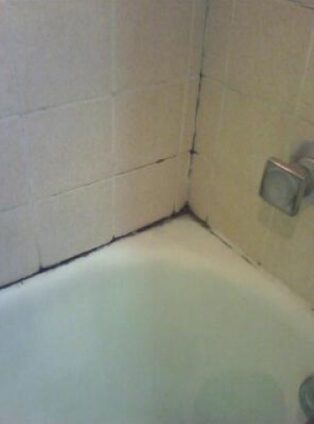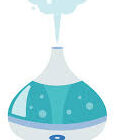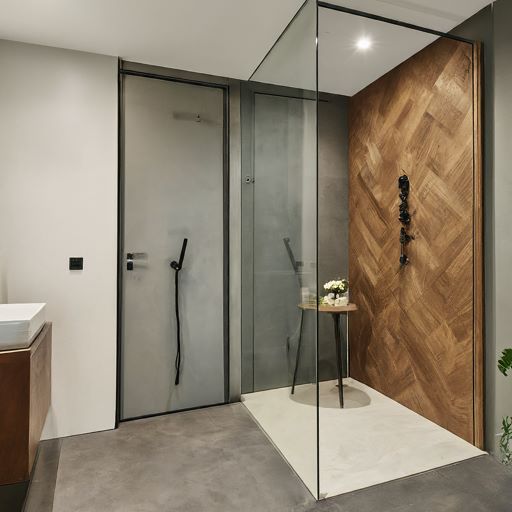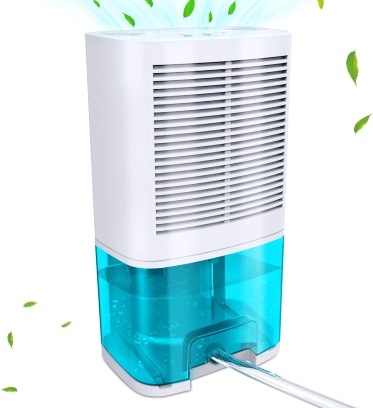How To Reduce Moisture Without A Dehumidifier: Tips That Work Perfectly
The recommended humidity level is 30 to 50%, but bathrooms and kitchens always raise it much higher than that. Bathrooms are especially notorious for harboring moisture, because of the showers, baths, and other water-intensive activities.
If there is 70 percent humidity inside, it can lead to a variety of problems, including mold growth, mildew, and even structural damage.
Actually, even 70 percent is way too high. The ideal humidity level for a house is between 30% and 50%, and in the winter, you might let it get near 60%.
However, after showering, bathing, or flushing the toilet, bathrooms can often exceed this range, creating an environment for mold development, and other problems.
The dangers of high humidity in the house

If you could contain the high humidity in the bathroom, perhaps it would not be too problematic. However, this is not possible, and air moisture spreads from the source to other rooms fast.
Also, high humidity in the bathroom can lead to:
Mold and mildew growth: Mold thrives in damp environments, and its spores can trigger allergies and respiratory problems. While some strains of mold are not dangerous, you still don’t want them. Also, black toxic mold is notorious for growing in the bathroom.
Rotting wood: Excess moisture can cause wood to rot, damaging your bathroom structure and fixtures. Your bathroom cabinets and shelves could start rotting, or become defaced once they absorb moisture. This will cost you money to repair.
Dust mite proliferation: Dust mites thrive in humid environments, and their allergens can exacerbate asthma and allergies.
Unpleasant odors: Moisture can trap odors, making your bathroom smell musty and unpleasant. If you experience a musty smell in the house, you have mold growing.
High humidity in the house can also lead to:
Respiratory problems: Like in the bathroom, high humidity in the house can exacerbate allergies and asthma.
Damage to furniture and belongings: Wood furniture and belongings can warp or rot in humid environments.
Increased risk of pests: Some pests, like cockroaches, are attracted to moisture.
Tips to lower humidity level without using a dehumidifier

If you cannot afford to get one of the best dehumidifiers for a bathroom, there are still many ways to naturally lower the humidity in your bathroom. Try the following things:
1. Improve ventilation
Open the windows and the doors after showering or bathing to allow moisture to escape.
Run the exhaust fan for at least 30 minutes after showering, and consider leaving it on low power continuously.
Exhaust fans draw the moist air outside, and allow drier air from the outside to come into the bathroom.
2. Take shorter showers
The longer you shower, the more moisture you add to the air, and the longer the humidity will linger in the space. Try to shorten your shower time to reduce the moisture in the air.
3. Squeeze out sponges and towels
Don’t leave wet sponges and towels hanging around, as they continue to release moisture into the air. Wring them out thoroughly and hang them to dry outside the bathroom if possible. You can also use a dehumidifier to dry the wet clothes, in the laundry room.
4. Use a squeegee
After showering, use a squeegee to remove water from shower walls and surfaces. This will prevent water from evaporating into the air. It is a simple tool, and it does not require any specialized knowledge to use.
5. Invest in a shower curtain liner
A fabric shower curtain liner can trap moisture and contribute to mold growth. Opt for a vinyl liner that dries quickly and is easier to clean. If it does not hold onto moisture, you will not have a mold problem.
6. Place moisture-absorbing materials strategically
Put bowls of baking soda or activated charcoal in your bathroom to absorb excess moisture. This is a means of making a DIY dehumidifier. Just ensure you change the materials in a day to prevent them from becoming waterlogged, especially if you live in a high-humidity place.
7. Grow moisture-loving plants
Plants like ferns and peace lilies can help absorb moisture from the air. However, be mindful not to overwater them because the water would ruin their roots and kill them. Besides, you don’t know whether soaps can harm the plants, as you use them and other ablution products in the bathroom.
8. Use a bathmat
A bathmat will absorb water that drips from your body after showering, preventing it from evaporating into the air. However, do not leave the wet bathmat in the bathroom. It will raise the humidity level when the water starts evaporating.
9. Fix leaky faucets and pipes
Leaky faucets and pipes can add significant moisture to the air. Repair them promptly to prevent further problems. Unless the bathroom is in use, there should be no water flowing or dropping anywhere.
10. Address ventilation issues
If your bathroom has poor ventilation, consider installing a fan or improving airflow through other means.
Frequently Asked Questions
How often should I dehumidify my bathroom?
The frequency will depend on your climate and how much moisture your bathroom generates. In general, aim to dehumidify after showering or bathing, and consider running the exhaust fan continuously on low power.
Are there any dangers to using natural dehumidification methods?
Most natural dehumidification methods are safe. However, be sure to empty the containers of baking soda or charcoal regularly to prevent mold growth. Avoid overwatering plants, as this can lead to root rot.
What if natural dehumidification methods aren’t enough?
If you’re struggling to control humidity with natural methods, consider investing in a dehumidifier. Choose one that is sized appropriately for your bathroom, and empty the water reservoir regularly.
Can high humidity outside affect my bathroom’s humidity?
Yes, high humidity outside affects the humidity inside. It can make it more difficult to control humidity inside your bathroom. However, using the tips above can still help to lower it to a manageable 50%.
What is the best way to lower humidity in my bathroom naturally?
The best approach will depend on your specific situation. However, a combination of methods, such as improving ventilation, using a squeegee, and placing moisture-absorbing materials, is usually most effective.
Conclusion
While dehumidifiers can be helpful, there are many effective ways to lower the humidity level in your bathroom naturally.
By following the tips above, you can create a healthier and more comfortable bathroom environment without relying on electricity. Remember, if you neglect the health of your bathroom, it will spread the high humidity to the rest of your house.
Finally, if you live in a high-humidity place, you should just order the Levoair dehumidifier on Amazon.com.
It has a 2-liter capacity, and drain hose attachment, is super quiet, and has a space rating of 650 square feet.
These and more features make it perfect for bathrooms, closets, kitchen, and other small rooms.


